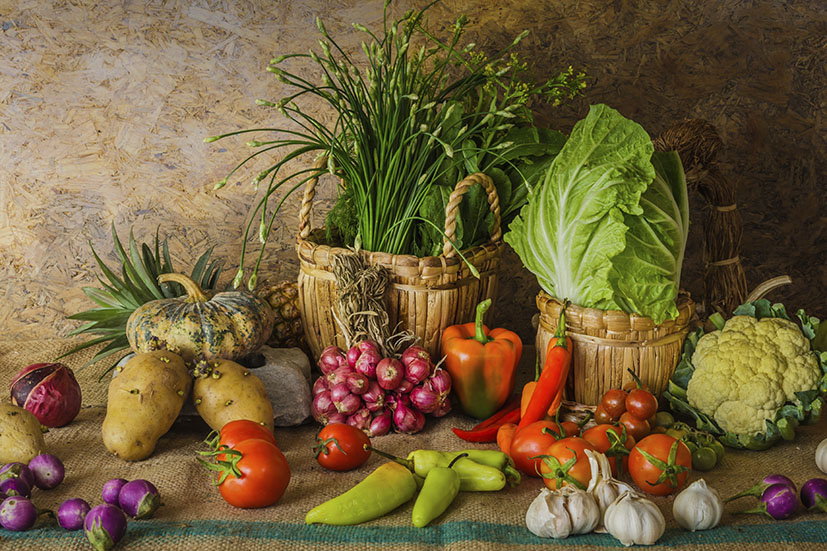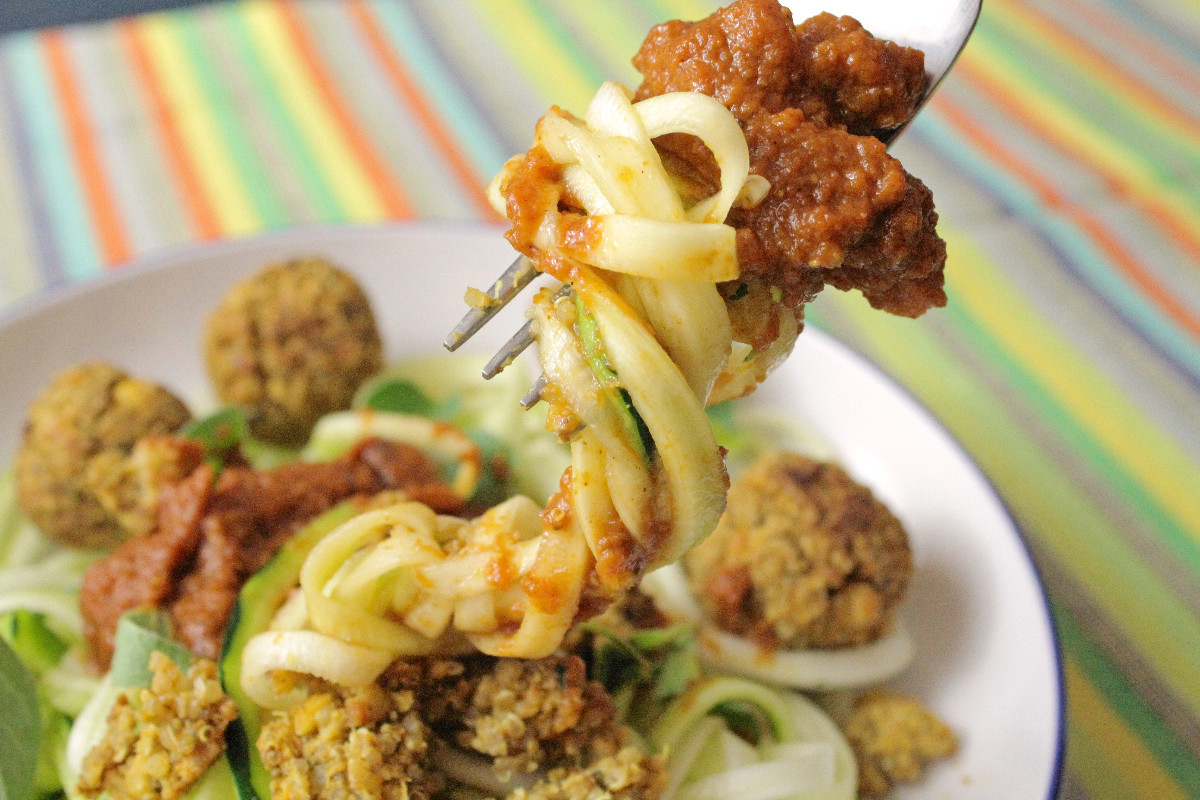What is a RAW Food Diet?

Acclaimed blogger Laura Hemmington from The Whole Ingredient shows how adopting a raw food diet can be healthy, less intensive on the environment and beneficial for weight loss…
If you’re a keen foodie, trend-follower, or even just an observant shopper, you’re bound to have noticed the recent growth in popularity of raw food diets; ‘eating raw’ has, apparently, gone mainstream.Together with a rise in the number of people making the transition to a diet based on whole foods (as opposed to processed foods), adopting a raw food diet is seen by many as healthy, less intensive on the environment and beneficial for weight loss.
But what does a raw food diet actually entail, and why are so many people keen to spread the word? And is it really that good for you?
To find the answers to some of these questions, let’s take a brief look at the origins of the raw food diet. Modern interest and the study into nutrition from a raw (and in particular plant-based) perspective started gaining popularity in the late 19th century, with advocates including, perhaps most famously, Max Bircher-Benner. The nutritionist and inventor of muesli claimed to have healed his own jaundice with a mostly raw, vegan diet; following which he founded what is now known as the Bircher-Benner Clinic.
Early pioneers in this field approached nutrition from principles of fasting and restriction, with a focus on foods that had a holistic, positive impact on the body.Today, it’s more likely that you’ll hear about the raw food ‘movement’ from documentaries like Eat to Live and Supercharge Me! 30 Days Raw, and celebrity proponents such as Woody Harrelson and Jason Mraz.
If you’re an Instagram foodie, it’s more than likely that your timeline is peppered with Californians and Australians displaying their colourful juices, smoothie bowls and raw tacos, accompanied by hashtags like #strongnotskinny #cleaneating and #rawtilfour.
Because eating a raw food diet really has gained a following. No longer confined to alternative therapists or the hippy trail, eating raw has become an assertion of healthy living, a trend, a lifestyle and an aspiration.
So what does ‘eating raw’ really mean?
To begin with, a raw food diet often goes hand-in-hand with one that’s plant-based, or vegan, so if you’ve already cut out animal products and follow a healthy diet, the chances are that you’re probably already eating a good portion of raw fruits and vegetables. Eating raw, however, isn’t limited to vegans and vegetarians, as the recent upsurge in the Paleo diet, which has raw adherents, shows.
But raw doesn’t necessarily mean uncooked, and it certainly doesn’t mean only eating fruits and vegetables. For a fully balanced diet that will provide you with all of the protein, healthy fats, fibre and nutrients you need, a raw food diet needs to incorporate plenty of unprocessed seeds, nuts and grains; as well as the vegetables high in vitamins, minerals and protein, such as leafy greens.
If raw foods are being ‘cooked’, they are prepared below a certain temperature (which is generally accepted to be around 40-47 °C, the point at which certain beneficial enzymes are believed to be destroyed); using processes such as dehydrating. ‘Living’ foods, which you may have seen labelled as ‘sprouted’ or ‘activated’ and include nuts, seeds and breads, are also becoming much more popular due to their higher enzyme content.
The focus on enzymes stems from the belief that the greater the number of enzymes contained in food, the better it can be digested. Cooking is thought to destroy a lot of enzymes, and therefore makes it harder for our bodies to digest what we’ve eaten; making it less beneficial in terms of nutrition, energy levels, immunity and other health benefits. As with all dietary advice, however, it should be noted that scientific studies are yet to prove a definitive link.
Aside from enzymes, one of the major draws for followers of a raw plant-based diet is the belief in a higher intake of antioxidants and phytonutrients, which are thought to help reduce the levels of free radicals in the body and prevent cancer. Again, these links are yet to be proven.
There is, however, much anecdotal evidence of plant-based raw food adherents noticing improvements to medical issues such as diabetes, cholesterol, skin complaints and obesity – it’s hard to doubt the claim that a diet based on more whole food, plant-based ingredients and raw foods can have a positive impact on our BMI. Plant-based foods fill you up, so you tend to eat fewer calories, as well as feeling lighter, brighter and more energised.
But remember, a raw diet that includes lots of fruits that are high in natural sugars will actually be surprisingly high in calories and may pose a risk to your dental health.
Deciding how ‘raw’ to make your diet is all down to balance. Some foods are actually better for us when cooked, as the heating processes makes plant fibres more digestible and nutrients more easily absorbed. One example is that of carotenes, the nutrients found in vegetables such as carrots, which are known to be better absorbed once cooked. And don’t forget that if you wish to follow an omnivorous raw diet you should be mindful of the bacteria present in some forms of uncooked meat, eggs and dairy.
On the whole, the benefits of eating raw can probably best be felt by eating a varied diet rich in nutrients such as calcium, Vitamin B12 and Vitamin D (specifically, Vitamin D2 for vegans), which can all be lacking in a fully-raw diet. Most raw foodists now adhere to a diet that is around 75% raw, noting the benefits to cooking (lightly) certain types of foods.
So, where’s the best place to start when considering a raw food diet?
Most adherents will suggest taking it one step at a time – you don’t want to shock your body! Switching to a totally raw diet, or detoxifying, in one step can result in headaches, outbreaks of skin problems and nausea. If you’ve ever given up caffeine for a period of time, you’ll be familiar with the body’s response to rapid change. So take it one step at a time and have a go at gradually incorporating some raw dishes into your repertoire. How about replacing cooked pasta with raw zoodles (courgette noodles), combining dates, nuts and raw cacao to make raw brownies, or being a little more adventurous and creating a dehydrated pizza crust from squash or cauliflower?
Include these raw power foods into your diet for super nutrient levels:
Leafy greens: (romaine, kale, chard, spinach): High in protein, vitamins E and C, and the antioxidant chlorophyll, leafy greens are a delicious and filling way to include more raw vegetables into your diet. Try marinating kale in lemon juice and a little oil to make a tasty salad.
Nuts & seeds, raw & sprouted: (almonds, walnuts, sunflower, pumpkin, hemp & chia seeds): these provide a high dose of vitamins, minerals, protein and dietary fibre, as well as owering blood cholesterol.
Fermented vegetables: (pickled radish, sauerkraut, kimchi). Great for digestion and an easy way to add immunity-boosting probiotics – and a bit of zing – to your meals.
Raw cacao: unprocessed and sugar-free, raw cacao retains all of the nutrients and good fats lost through heating. A genuinely healthy way to enjoy chocolate.
Foods that are better cooked:
Carrots: beta-carotene is more easily absorbed and converted to Vitamin A when carrots are cooked.
Tomatoes: easier to digest, releasing higher levels of the antioxidant lycopene.
Spinach: wilt these green leaves to make the most of their high levels of iron and calcium.
Asparagus: the antioxidant ferulic acid is more easily-released when cooked.
Potatoes: starchy, bitter and sometimes toxic when green, potatoes are best enjoyed cooked.

